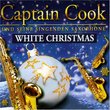Among Norgard's most straightforwardly melodic works of the
Christopher Culver | 03/31/2009
(3 out of 5 stars)
"This 2009 Dacapo disc contains three works by the Danish composer Per Norgard. Two of them are related by instrumentation, and two by musical material. All of them were written in the 1970s shortly after Norgard's Symphony No. 3, and continue his interest in the "infinity series", his major musical discovery. With the infinity series, the same musical gestures are simultaneously heard at many different tempos and harmonic transpositions, while selecting notes from the series (e.g. every 3rd, 5th, 12th etc.) can produce lovely melodies. The most straightforward display of these new possibilities, as well as the standard introduction to Norgard's music, is the Symphony No. 3, so this review will assume some prior experience with that masterpiece. There's a new recording of the symphony out on another recent Dacapo disc, check it out.
At the middle of the second movement of the Third, Norgard had one half of the choir singing the Marian hymn "Ave Maris Stella". When he subsequently received a commission for a piece employing early music instrumentation, Norgard chose to spin off this melody into a standalone work. The result was "Nova Genitura" for soprano and ensemble (1975). It is amusing to hear bits of the infinity series played on instruments of three hundred years ago, such as lute, harpsichord, recorders and crumhorn. "Fons Laetitiae" for soprano and harp (1975) begins with another exploration of "Ave Maris Stella", but it goes on to mark the first appearance of the "Flos ut rosa floruit" melody which has got its own whole host of works over the last 30+ years. For those interested in the relationships between the many infinity series works of this era and their common melodies, there's a helpful diagram in the catalogue "Per Nørgårds kompositioner: En kronologisk-temaeatisk fortegnelse over værkerne 1949-1982" issued by his publisher Edition Wilhem Hansen.
The moment when Per Norgard radically changed course from the cosmic unity of the infinity series of the 1970s to the schizoid music of the early 1980s is traditionally dated to one fine day in 1979, when Norgard encountered the work of the schizophrenic Swiss artist Adolf Wolfli at an art exhibition in Copenhagen. But in fact, a polarity between light and darkness, or idyll and catastrophy, began to manifest itself in his music a bit earlier. "Seadrift" for soprano and ensemble (1978) is another infinity series piece for early music ensemble, but it is in a very different mood than "Nova Genitura". This Walt Whitman setting is bipartite in form, with its first movement titled "Being Together" and its second "Torn Apart". The violence of the second movement does seem a bit tame and immature in context, as it seems Norgard really needed the art of Wolfli to unlock truly visceral catastrophe. Nonetheless, it provides a good variety against the two other pieces on the disc.
I've given this disc three stars in order to show where I feel it falls among Norgard's other output. Music listeners who are merely interested in modern works with a strong reference to traditional tonality will probably find the recording superb, and the endlessly blossoming melodies are indeed lovely. However, I find that they are not typical of Norgard's music in that the concept of interference between different musical planes is not very present. Of his infinity series works, I prefer those where the listener is challenged to follow one musical strand against another, or even follow a line that is unheard but part of the whole infinity series texture. For that reason I'm inclined to think of the Third Symphony, "Twilight" or "Frostsalme" as the major works of the era."




